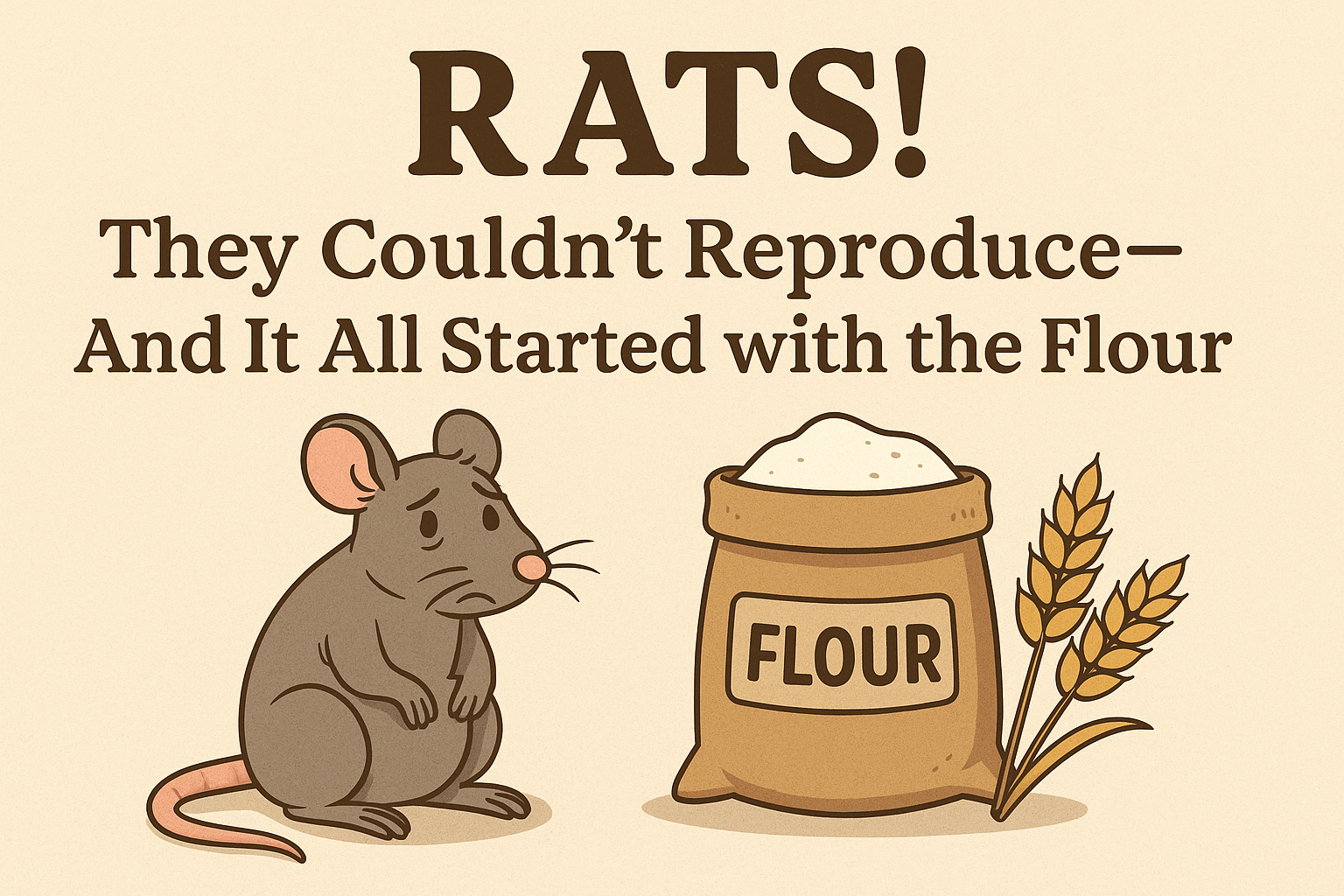Imagine you’re a rat. Life’s pretty simple: scurry, snack, snuggle, repeat. Now imagine you’re part of a controlled German study in the 1970s, and your future depends entirely on one thing: your bread.
That’s right. This week we’re talking about a little-known, wildly fascinating experiment that might make you rethink your daily loaf.
The Study: Flour Wars, Rodent Edition
In the 1970s, researchers in Germany decided to test the long-term effects of different kinds of flour on rats. The rules were simple: divide rats into five groups and feed them diets based on the following:
- Freshly stone-ground whole wheat flour
- Bread made from that same fresh flour
- The same flour, but stored for 15 days before feeding
- Bread made from the 15-day-old flour
- White flour (a.k.a. the bleached, stripped, joyless kind)
Each group got 50% of their diet from the flour or bread assigned. The rest? Just basic lab rat grub. The goal? See how each group fared over multiple generations.
The Results: Four Generations and a Funeral for Fertility
Here’s where it gets juicy. The first two groups—fresh flour and bread made from fresh flour—were thriving. Generation after generation, they were living their best rat lives, complete with all the reproductive vigor you could hope for.
The other three groups? By the fourth generation, things got… quiet. Like, rat Tinder went extinct kind of quiet. These rats had lost their ability to reproduce entirely.
That’s right: rats eating 15-day-old flour or white flour stopped making babies. Meanwhile, their fresh-flour-fed cousins were out here building dynasties.
Science Side Note: What the Heck Happened?
Nutrients are a fragile bunch. When you mill wheat, you expose oils, vitamins, and antioxidants in the bran and germ to air and light. That starts a clock on oxidation—the process that kills off the good stuff like Vitamin E, B vitamins, and essential fatty acids.
In white flour, the bran and germ are removed completely. That means you lose most of those nutrients before you even open the bag. In the 15-day-old flour, the nutrients are still there—but decaying fast.
So by the time that flour hits your bread, it might taste fine but biologically? It’s ghosted the good stuff. And over time, that nutritional gap can lead to serious consequences—like multi-generational infertility.
🤔 So…What Does This Mean for Us?
You’re not a rat (hopefully), but the implications are real. If rats lose fertility after four generations of eating nutrient-dead flour, what could that mean for humans who’ve been munching on mass-produced white bread for decades?
Four rat generations is about 100 human years. That’s roughly the time span since industrial milling and white flour became staples in Western diets. Coincidence? Maybe. Concerning? Absolutely.
The Fresh Flour Revolution
The good news is you don’t need to become a survivalist to fix this. Just go back to basics:
- Use fresh-milled wheat when you can.
- Bake with whole grain flours that still have the germ and bran.
- Store flour in airtight containers and use it quickly.
Not only is it better for you, but it also tastes wildly better. Like, slap-some-butter-on-it-and-sing-to-it level good.
Conclusion: Flour Power Is Real
So yeah. Rats lost their reproductive spark over bad bread. But we don’t have to. Fresh-milled grain is more than a food trend—it’s an ancestral whisper saying, “Hey… maybe don’t eat stuff that sat on a shelf for a year.”
And if you needed a reason to fall in love with real bread again, this is it.
Here’s to fresh flour & bread, frisky rats, and never underestimating the power of a whole grain.


